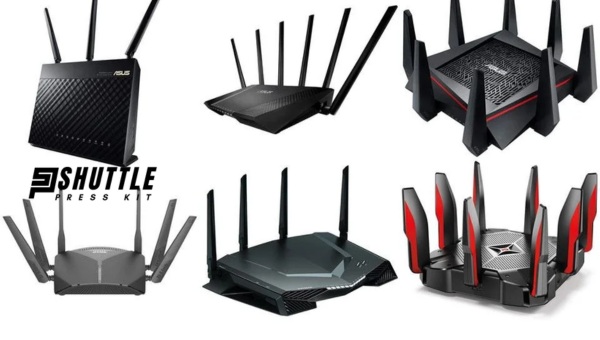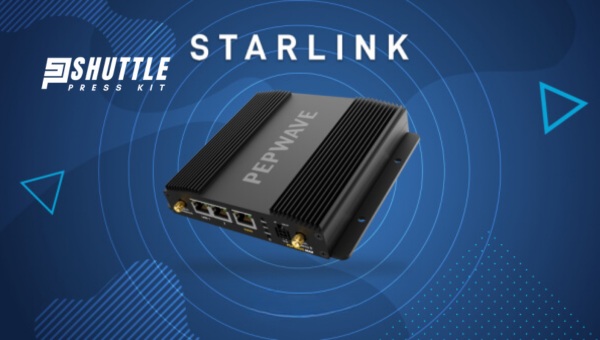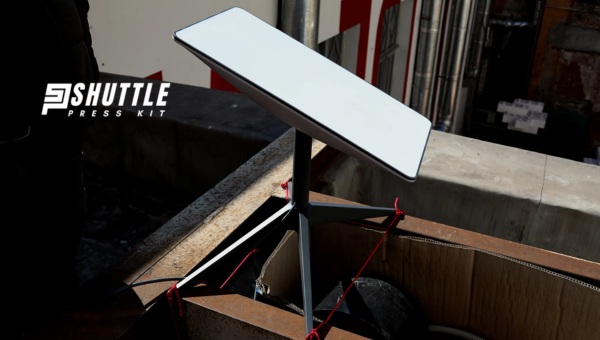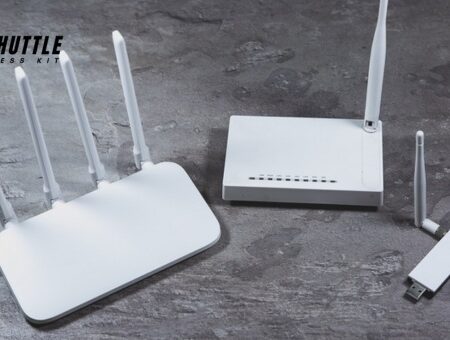Ever wondered if your internet could run even smoother with Starlink? I have good news for you! Choosing the best aftermarket wifi routers for Starlink can make a huge impact on your online experience. Think of faster speeds, better coverage, and a reliable connection that doesn’t drop when you’re in the middle of something important.
So, if you’re tired of staring at loading screens or dealing with patchy Wi-Fi, keep reading to find out how these top-rated routers can upgrade your Starlink setup. It’s time to unleash the full potential of your satellite internet service and say goodbye to frustration.
Selection Criteria for Best Aftermarket Wifi Routers For Starlink
When it comes to upgrading a home or business internet setup, the router can make a world of difference in terms of connection quality and speed.

This is where aftermarket wifi routers come into play. Here are key points that should govern your selection for the best aftermarket wifi routers for Starlink.
Understanding the Need for an Aftermarket Router
Why might you need an aftermarket router for your Starlink service?
- Improved Performance: Original equipment from service providers can sometimes lack in terms of performance capabilities. An aftermarket router can notably improve bandwidth distribution and provide more robust, steady connections throughout your space.
- Advanced Features: Many aftermarket routers come with advanced features such as Tri-Band technology, better usage control through apps, and increased security options that enhance user experience.
- Better Coverage: Large spaces often suffer from dead zones or areas with weak signals. In such cases, a high-range router does wonders in ensuring seamless connectivity throughout.
Key Features to Consider
Choosing the best aftermarket wifi routers for Starlink requires careful consideration of several factors:
- Compatibility: This might sound obvious but it’s crucial to verify compatibility with Starlink before buying a certain model.
- WiFi Standard: Look out for Wi-Fi 6 or Wi-Fi 6E standard technologies as they offer faster speeds and improved performance over older standards.
- Frequency Bands: While dual-band routers (2.4GHz and 5GHz) have been popular, tri-band routers (additional 5GHz or 6GHz band) have started making their mark because they deal better with congestion by providing another band to distribute devices on.
- Coverage Range & Capacity: Depending on your space size and number of devices used simultaneously, choose a router that offers sufficient range without sacrificing speed.
- Ports Availability & Type: For those needing wired connections alongside wireless: do check the number and type of Ethernet and USB ports.
We’ll delve deeper into these considerations as we discuss our top five aftermarket wifi routers for Starlink further along.
Also Read: Can You Set Up Your Starlink Router Outdoors? Ultimate Guide
Top Five Aftermarket Wifi Routers For Starlink
When choosing the best aftermarket wifi router for my Starlink system, I experienced firsthand how challenging this can be.

My search led me to five distinct routers, each characterized by unique features and capabilities. Let’s take a closer look at these options.
1. ASUS RT-AXE7800
- Wireless Standard: Next-generation Wi-Fi 6E (802.11ax)
- WiFi Coverage: Extensive, covering up to 3,000 square feet
- Devices Support: Handles up to 60 devices simultaneously
- Band Frequency: High-efficiency Tri-Band
- Ports Availability: Multiple ports including 1 x Gig-E WAN/LAN + 3 x Gig-E LAN + 1 USB Port
I have to say that the ASUS RT-AXE7800 stands out from the pack in various ways. First off would be its compatibility with all of Starlink’s service plans – from Premium and Business all the way down to Home. This makes it a convenient choice for a wide range of users.
More importantly, I’ve realized that Wi-Fi range is always something you should consider while picking your aftermarket wifi router for your Starlink setup.
After having used multiple routers over the whole span of my professional career so far I have experienced problems like drop-outs or weak signals in certain spots inside even medium-sized homes… You’ve got no idea how much difference an ample coverage of up to 3000 square feet can make!
In case you’re not familiar with WiFi terminology, band frequency essentially determines how much data can be transmitted wirelessly from your router at once.
More bands mean more lanes for data travel; hence quicker speeds even when multiple devices are interconnected simultaneously. With a tri-band supported by this router such as ASUS RT-AXE7800, rest assured that it’ll likely hold sturdy even for larger families or busy shared apartments!
Another winning point goes to its numerous ports – offering fantastic flexibility whether you want wired Internet connections for some specific devices or have some USB-enabled gear around like printers, etc.
| Pros | Cons |
|---|---|
| Maybe more than what smaller homes require | Slightly on the pricey side |
| Exceptional range coverage of up to 3,000 square feet | May be more than what smaller homes require |
| Can handle numerous devices concurrently – This Tri-Band won’t let you down! | Instructions for setup may appear complex to some users initially |
| Vast compatibility with Starlink’s various service plans | While not a ‘con’ per se, advanced features may need savvy users to fully exploit them |
| Multiple port options cater to diverse user needs beautifully |
2. NETGEAR Nighthawk RAX43
- Supported Starlink Plans: Home & Business
- Wireless Standard: Advanced Wi-Fi 6 (802.11ax)
- WiFi Coverage: Spacious coverage up to 2,500 square feet
- Devices Support: Accommodates up to 30 devices concurrently
- Band Frequency: Efficient Dual-Band
- Ports Availability: Comes with 1 x Gig-E WAN, 4 x Gig-E LAN plus an additional USB port
The NETGEAR Nighthawk RAX43 is indeed one in a million. What sets it apart the most is its support for Starlink’s Home and Business service plans, which means users of all consumption levels will find this router useful. This ensures wide-reaching applicability that keeps you connected without bounds.
As far as the Wi-Fi range goes, being able to cover up to 2,500 square feet really strikes me as excellent. Over time, I’ve realized that patchy or weak Wi-Fi signals can be downright frustrating in larger homes or shared spaces. Therefore, having a router capable of pushing out strong signals over greater areas undoubtedly affects how you experience your internet!
Moving on; swift wireless transmissions are made possible with the dual-band feature of this router model, which splits your traffic into two separate lanes (bands). When the network gets busy – like when everybody gets back from work or school – have no worries about potential lags since all connected devices will get their fair share!
Did I mention flexibility? With multiple types of ports available on this device – including both Ethernet and USB ones – you have absolute freedom in setting your own preferred wired Internet connectivity options as well.
| Pros | Cons |
|---|---|
| Enhanced speed with Wi-Fi marks six standard | Initial setup might be complicated for some |
| Wide range coverage of up to 2,500 square feet | Extended features may feel overwhelming for non-techsavvy users |
| Supports multiple devices at the same time – Dual-Band warms your heart! | The price tag may be a bit steep |
| Wide Starlink service plans compatibility gives you peace of mind | For some smaller spaces, this router might be an overkill |
| Multiple port options for ultimate user flexibility |
3. TP-Link Archer AXE75
- Compatible Starlink Plans: Home, Business, & Premium
- Wireless Standard: Advanced Wi-Fi 6E (802.11ax)
- WiFi Coverage: Quite expansive with up to 3,000 square feet
- Device Support: Amazing capacity of supporting up to 200 devices concurrently
- Band Frequency: Superior Tri-Band
- Port Availability: Multiple ports including Gig-E LAN + USB ports.
When it comes to aftermarket wifi routers for Starlink service, the TP-Link Archer AXE75 is a potent contender. I am particularly impressed by the compatibility of the AC4000 Smart Wifi Router with almost all types of Starlink’s service plans including Home, Business & Premium. This guarantees that you experience no hiccup or bottleneck in your service irrespective of your chosen package.
Moreover, noticing its wide coverage area – spanning up to 3000 square feet – brought me sheer delight! With such an impressive coverage area you can move freely within this perimeter while maintaining strong signal strength. A gamer or work-from-home professional like me who has tossed and turned over constant dead spots appreciates just how significant it is!
Finally yet crucially let’s talk about this jaw-dropping fact – it can support a whopping 200 devices at the same time!
| Pros | Cons |
|---|---|
| Top-tier Wi-Fi 6E for superior connectivity speeds | Might be slightly costly for those tight on budget |
| Boasts large coverage area up to 3k square feet | The large range may be unneeded in smaller homes/platforms |
| Seamless connection with up to an unbelievable count of 200 devices at once! | The initial setup might feel intricate till you get familiarized |
| Wide compatibility range with various Starlink services plans |
Also Read: How to Rent Starlink? Quick Guide for Seamless Connectivity
4. TP-Link Archer AX21
A glimpse at the significant features of this router:
- Speed: High-speed connectivity at 8 Mbps
- Range: Wide-reaching coverage up to 2,500 square feet
- Bands: Utilizes Dual-Band technology
- Wireless Protocol: Includes various standards such as 11ac, 802.11n, 802.11ax, 802.11g, and 802.11b
- Ports Availability: Offers five ports for diverse connections
The TP-Link Archer AX21 has definitely caught my eye with its promise of high-speed internet access. With a speed reaching up to a whopping 8 Mbps and using advanced Dual-Band technology, it ensures smooth and lag-free connections whether you’re streaming your favorite shows or tackling important business tasks.
Something that I personally appreciate about this router is its ample wireless coverage of up to 2,500 square feet. No more struggling with dead spots or slow zones in your own home! Just seamless browsing all around.
Another feature I find particularly handy is its wide array of ports which makes it ideal for a myriad range of wired devices without any limitations on accessibility.
| Pros | Cons |
|---|---|
| High-speed internet access at 8 Mbps | Not designed for ultra-high bandwidth usage |
| Wide range – covers up to the impressive mark of 2,500 square feet | On-board software could be improved |
| Utilises dual-band technology for reliable connections | Setup process may be slightly challenging for novice users |
| Supports multiple wireless protocols including modern Wi-Fi standards | |
| Multiple connectivity options with five different ports |
5. ASUS ROG Rapture GT-AX6000
Let us dive into some key specs of this router:
- Speed: Blazing fast with up to 6000 Mbps
- Range: Impressive, spanning over 4000 square feet
- Bands: Efficient Dual-Band operations
- Wireless Protocol: Versatility with 11ax, 802.11b, 802.11a, 802.11ac, & 802.11g
- Ports Availability: Plenty, including five separate ports
There are a lot of great routers out there, but the ASUS ROG Rapture GT-AX6000 strikes me as something special. What caught my eye was its high-speed rating that tops at a whopping 6000 Mbps! This means buffer-free streaming and lightning-fast download speeds even during heavy network use.
For those who have larger homes or office spaces and struggle with reaching every corner effectively, I know your pain! Struggling for signal strength in certain rooms is frustrating, but worry not – here comes the hero with an extensive range of over a staggering 4000 square feet!
The flexibility of having multiple ports means room to connect multiple devices simultaneously for diverse needs – something I find very useful when you want to get the most out of your wifi router! Lastly, this router supports various wireless protocols ensuring a wider compatibility range.
| Pros | Cons |
|---|---|
| Top speed rated at astounding 6000 Mbps | Quite pricey in comparison to other models |
| Offers coverage for huge areas over 4K square feet | Might be an overkill for smaller houses or personal usage |
| Allows multiple device connectivity through different ports | Chance that some features may seem confusing to non-tech users |
| Excellent versatility with support for numerous wireless protocols |
How to Set Up Your Aftermarket Wifi Router with Your Starlink System
When it comes to setting up your aftermarket Wi-Fi router with your Starlink system, certain steps need to be followed.

These, coupled with a thorough understanding of potential challenges you might face during the setup, can ensure a smooth and efficient installation process.
Step-by-Step Guide
Here’s a simple, step-by-step guide that will help you set up your new router with the Starlink system:
- Unbox Your Router: First and foremost, unbox your chosen aftermarket Wi-Fi router. Make sure all components are present as indicated in the product manual.
- Connect Cables: Find the Ethernet cable included with your package and connect one end of it to the LAN port on the back of your router.
- Powering Up: Plug in and turn on both your Starlink dish’s power supply unit and your new aftermarket router.
- Connection With The Dish: Connect another end of an Ethernet cable to any LAN port at the back of your power supply (for Starlink dish) unit.
- Accessing Router Settings: On a device connected to this new network —either via Ethernet or Wi-Fi—type in its default IP address into any web browser to access admin settings.
- Identification Details: It would prompt you for a username and password (which would typically be set as ‘admin’ initially).
- WAN Settings Configuration: Go under WAN settings, where an option for DHCP should be selected if not already done so.
Voila! Your aftermarket wifi router should now be successfully set up for use with Starlink service!
Potential Challenges During Setup
Even though setting up an aftermarket wifi router is generally straightforward, there might still be obstacles encountered:
- Router Not Connecting: This is one problem many users face while trying their hand at setup due to some underlying firmware issues. Most of the time, a simple restart is enough to troubleshoot the issue.
- Wi-Fi Password Issues: It’s a common problem for users to forget their Wi-Fi password during setup. If this occurs, hit the reset button to change the password.
- Invisible Network: This might happen if router operation mode or network frequency has been inadvertently changed.
These challenges certainly look intimidating, but rest assured that they are very solvable problems. All you need is patience and practicality.
So here you go! With these instructions at hand, setting up the best aftermarket wifi routers for Starlink should be a breeze!
Also Read: Starlink Accessories Buying Guide: Ultimate Tips and Tricks
FAQs
What routers work well with Starlink?
There are numerous aftermarket wifi routers compatible with Starlink, like Netgear Nighthawk RAX120, ASUS RT-AC5300, and Google Nest Wifi Router. The best one depends on your specific needs and budget.
Can I use a different router with Starlink?
Yes, you can use a different router with your Starlink system. Although Starlink provides its own router, using an aftermarket one could potentially improve network performance and expand wifi coverage depending on the model.
What router do I need for Starlink?
The best aftermarket wifi routers for Starlink are ones that offer high speed, long-range coverage, and secure connection features. Depending on your particular demands such as gaming or multiple device streaming this might all be diverse .
Can TP Link work with Starlink?
Definitely! TP Link routers can work efficiently with the star link system provided they are configured correctly. Just ensure to follow the user guide correctly during installation for optimal results.
Also Read: Setup Starlink: Quick & Easy Guide for Seamless Connectivity
Conclusion
Setting up the best aftermarket wifi routers for Starlink may seem daunting at first, but it doesn’t have to be. Taking into account your specific needs, the unique features of different routers, and your budget can help steer you toward the perfect choice.
While it’s true that there might be some hiccups during setup, understanding potential challenges will better equip you to troubleshoot. Finally, remember that an aftermarket router is meant to enhance your Starlink experience and bring out its full potential.
